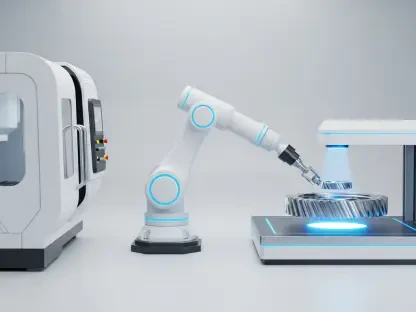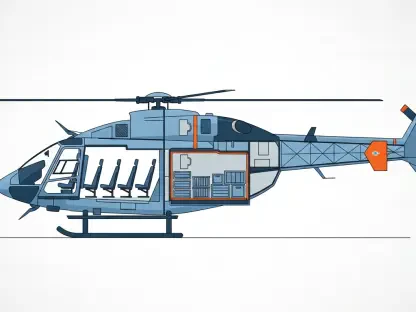Venus Aerospace has introduced a revolutionary propulsion system called the Venus Detonation Ramjet 2000 lb Thrust Engine (VDR2) at the Up.Summit in Bentonville, Arkansas. This groundbreaking technology is specifically designed to power high-speed vehicles such as drones and aircraft, with the ambitious goal of transforming long-distance travel at high altitudes while achieving speeds of up to Mach 6. The VDR2 represents a significant leap forward in propulsion technology, merging the high thrust and efficiency of the Rotating Detonation Rocket Engine (RDRE) with the functional efficiency of a Ramjet for cruising. This fusion results in a streamlined, single-engine system that operates efficiently from take-off to hypersonic speeds, minimizing aerodynamic drag and eliminating complex mechanical components.
A Leap Towards a Hypersonic Economy
The Significance of VDR2
Dr. Andrew Duggleby, co-founder of Venus Aerospace, emphasized that the introduction of the VDR2 engine marks a crucial milestone toward realizing a hypersonic economy. The engine’s design aims to bridge the gap between theoretical concepts and practical applications, a feat long considered a significant challenge in aerospace engineering. By partnering with Velontra, a firm specializing in high-speed air combustion, Venus Aerospace intends to fast-track the practical deployment of this technology. Velontra’s COO, Eric Briggs, highlighted the importance of this collaboration, noting that both companies are committed to addressing complex challenges. This partnership aims to unlock new possibilities for commercial and defense high-speed flight economies.
The VDR2’s capabilities are expected to have far-reaching implications not only in the aerospace sector but also in various industries that rely on rapid and efficient transportation. By achieving hypersonic speeds, the VDR2 could revolutionize the logistics and defense sectors, making it possible to traverse continents in mere hours. This advancement promises to reconfigure the logistics landscape, allowing for incredibly fast delivery of goods and services, potentially transforming global commerce. In defense, the VDR2’s high-speed capabilities could result in faster deployment of resources, thereby enhancing national security.
Timeline and Financial Backing
Scheduled for its first flight test in 2025, the VDR2 will be integrated into Venus Aerospace’s hypersonic flight test drone. Founded in 2020 by Andrew and Sassie Duggleby, Venus Aerospace has successfully raised $70 million in venture capital to support the development of reusable high-speed technology. This financial backing has enabled the company to achieve significant milestones. Earlier this year, they celebrated a major milestone by flying their first supersonic drone in February 2024. The successful flight marks an essential step toward the broader deployment of the VDR2 engine.
The timeline for the VDR2’s development and its upcoming flight test underscore Venus Aerospace’s commitment to advancing high-speed flight. This timeline highlights the company’s strategic planning and execution capabilities. Achieving these milestones not only instills confidence among investors but also signals to the wider aerospace community that Venus Aerospace is a serious contender in the race to develop hypersonic technologies. Moreover, this progress serves as a testament to the innovative spirit and technical prowess of the Venus Aerospace team, paving the way for even more ambitious endeavors in the future.
Collaboration and Practical Application
Venus Aerospace and Velontra’s Shared Vision
The development of the VDR2 engine represents a pivotal step toward redefining the boundaries of aviation and defense. The collaboration between Venus Aerospace and Velontra stands as a testament to a shared vision of bringing high-speed technologies out of the realm of theoretical textbooks and into practical applications. Both companies aim to push the envelope of modern aeronautics, striving to establish a new market economy centered around hypersonic travel. This initiative not only aims to revolutionize flight mechanics but also promises to create new commercial opportunities and enhance national and international defense capabilities.
The practical applications of the VDR2 extend beyond its immediate use in aerospace. With its ability to operate efficiently from take-off to hypersonic speeds, the engine could be a game-changer for a variety of industries. For example, the logistics sector stands to benefit significantly from the reduced travel times, potentially transforming global supply chains. Additionally, the defense industry could utilize this technology for rapid deployment and strategic operations, enhancing both offensive and defensive capabilities. The innovative design of the VDR2 minimizes the mechanical complexity, making it an attractive option for widespread adoption in various sectors.
The Future of High-Speed Aerospace Transport
Dr. Andrew Duggleby, co-founder of Venus Aerospace, highlighted the groundbreaking introduction of the VDR2 engine as a major step toward a hypersonic economy. The engine’s design aims to turn theoretical ideas into practical realities, a significant hurdle in aerospace engineering. Venus Aerospace has teamed up with Velontra, which specializes in high-speed air combustion, to expedite the practical use of this technology. Velontra’s COO, Eric Briggs, stressed the importance of this partnership, saying that both companies are dedicated to solving complex challenges. Together, they aim to unlock new opportunities for both commercial and defense high-speed flight economies.
The VDR2’s impact is expected to extend beyond aerospace, affecting industries that depend on fast and efficient transportation. By reaching hypersonic speeds, the VDR2 could drastically change logistics and defense, making it feasible to cross continents in just hours. This innovation could reshape the logistics sector, enabling rapid delivery of goods and services and potentially transforming global commerce. In defense, the VDR2’s high-speed capabilities could enable quicker deployment of resources, thereby boosting national security.









